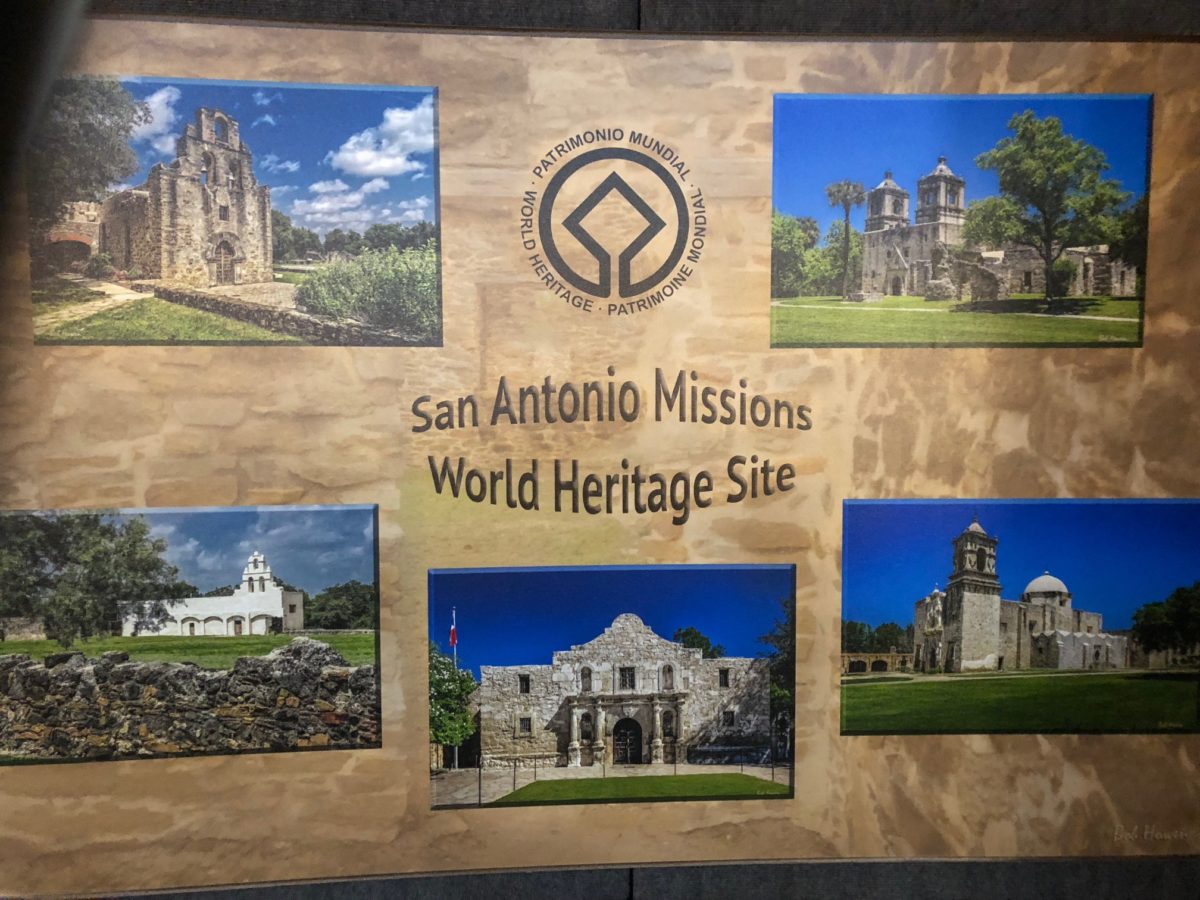Mission. Accomplished. (San Antonio Missions)
In celebration of National Park Week, our mission was to visit the San Antonio Missions National Historical Park. This park includes a string of five Spanish Colonial Missions built in the early 18th century, starting about 10 miles south of town and ending at the Alamo in downtown San Antonio. It is the largest concentration of Spanish missions anywhere in North America. The Spanish Colonial Missions are recognized as a UNESCO World Heritage Site.
Visiting San Antonio Missions National Historic Park
There are three ways to visit the missions: drive, take the bus or bicycle. We chose to bicycle and are so glad that we did. Not only was it a great way to honor “Earth Day” by not polluting, it was a gorgeous trail and one that we are happy we didn’t miss.
The San Antonio Riverwalk
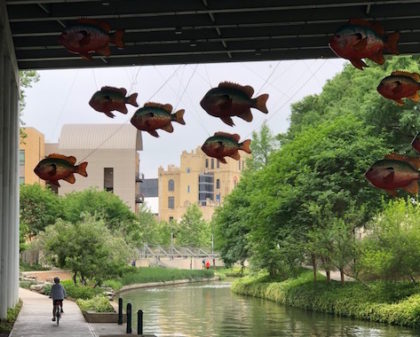
When you think of San Antonio, your thoughts probably turn to the famous Riverwalk with it’s shops and restaurants lining the banks of the San Antonio River with tourist boats slowly cruising past you as you eat or drink.
What we hadn’t realized was how far the Riverwalk extends. Only recently, in 2013, a major restoration project extended the first phase of the Riverwalk south as far as Mission Espada. They call it the “Mission Reach”. It offers wide paved trails wind along the river, passing historic homes and dams, full of waterfowl, birds and wildflowers, providing easy access to each of the famous missions.
Cycling the Riverwalk
You can bring your own bikes or use the convenient rental bikes. There are stations at each mission where you can pick up a bike, then dock it while you visit and then check it out again – all for a fixed hourly or daily fee.
Your journey begins at the downtown Visitor Center, across from the Alamo. There you can pick up a detailed map and guide to the Riverwalk and it’s missions. We cycled from there to Mission San Jose. That’s where the main National Park Visitor Center is located. They have a very good movie about the missions and the history.
Tejanos and Gauchos
We were surprised to learn some more of the history … we hadn’t really thought about the way that the Spanish had tried to colonize the northern frontier of “New Spain” through the missions. The Spanish didn’t have many of their own settlers, so they used the missions to convert the locals to Catholicism, and also to teach them the Spanish language and gain their allegiance to the Spanish Crown.
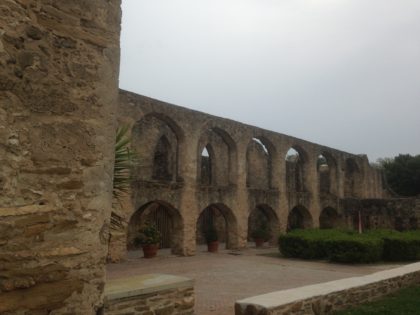 As such, the original “tejanos” were actually native Indians, most from local hunter/gatherer tribes. It is thought that they willingly came into the Spanish missions because there had been a period of drought and the missions offered them food, of course in return for their conversion and their labor. It was the Indians who built these amazing structures – not just the churches but the surrounding enclosures – forts protecting them from the marauding Apaches. The stone walls still survive today.
As such, the original “tejanos” were actually native Indians, most from local hunter/gatherer tribes. It is thought that they willingly came into the Spanish missions because there had been a period of drought and the missions offered them food, of course in return for their conversion and their labor. It was the Indians who built these amazing structures – not just the churches but the surrounding enclosures – forts protecting them from the marauding Apaches. The stone walls still survive today.
These Indians were also the first “gauchos” or cowboys. It was the Spanish who brought the ranching practices north from what is now Mexico, and they taught the Indians how to ride horses and tend the herds.
The San Antonio Missons
Not only was the history surprising, we were also surprised at how different each of the missions were. Even though they were just a few miles apart, they were strikingly different in terms of the architecture and size.
Mission Espada
Mission Espada was the smallest sanctuary, but one of the most quaint with it’s relatively small entrance and gorgeous gardens.
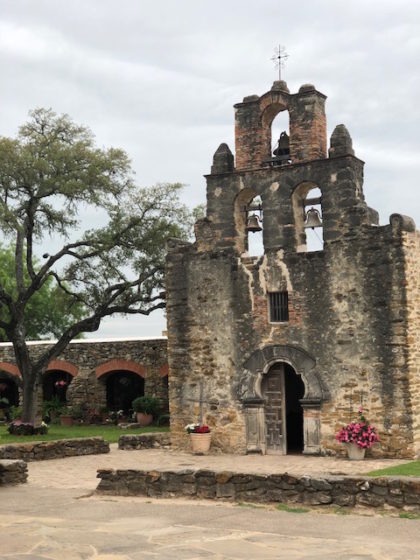
Mission San Juan
Mission San Juan had the least ornate but most interesting architecture – the bell towers were not on the front, but along the side. The gate was also a neat bit bit of history, where the gatekeeper demanded credentials before anyone could enter the enclosure and closed the gate to entry every night.
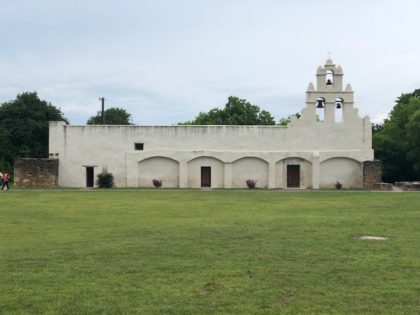
Mission San Jose
Mission San Jose is probably the largest, at one time housing several hundred people within the grounds. This was the prettiest mission, with detailed carvings gracing the front of the church and a beautiful interior. The perimeter walls were largely intact, giving you a great idea of how they defended themselves.
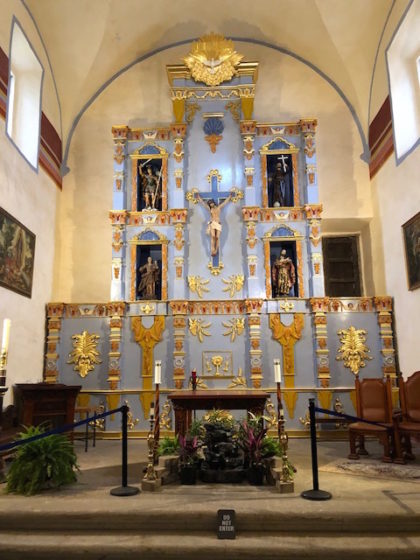
Mission Conception
Mission Conception was the best preserved with some of the original frescoes on the ceilings and walls. Amazing these can last over 300 years.
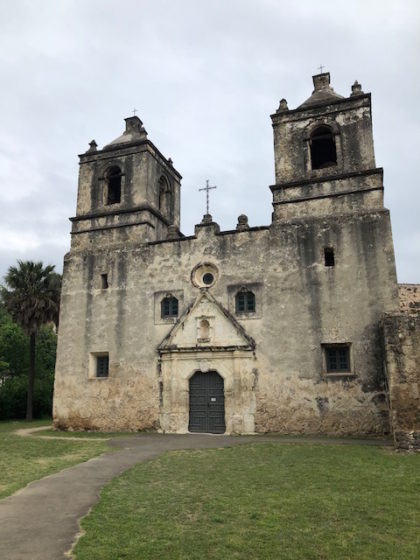
The Alamo
The Alamo is the last of the string of missions … start or end your tour here to not only learn more about the Spanish missions but also the famous battle. While most people go to San Antonio mainly to see the Alamo, we recommend that any visit include a tour of the San Antonio Missions. All of the missions host active congregations and welcome visitors to regular services.
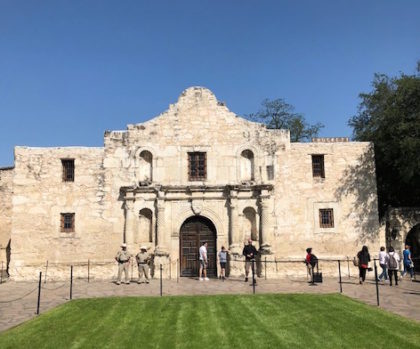
San Antonio celebrates it 300th anniversary in 2018 and is steeped in history. Have fun and enjoy your visit to yet another national treasure administered by the National Park Service!

